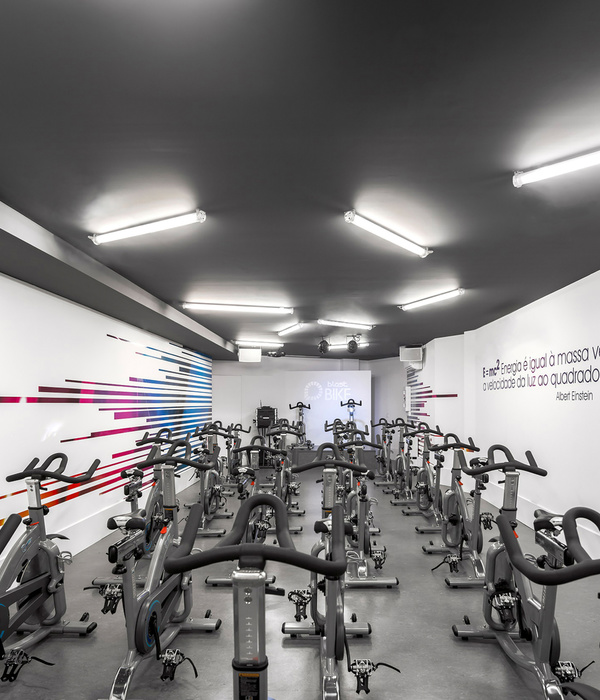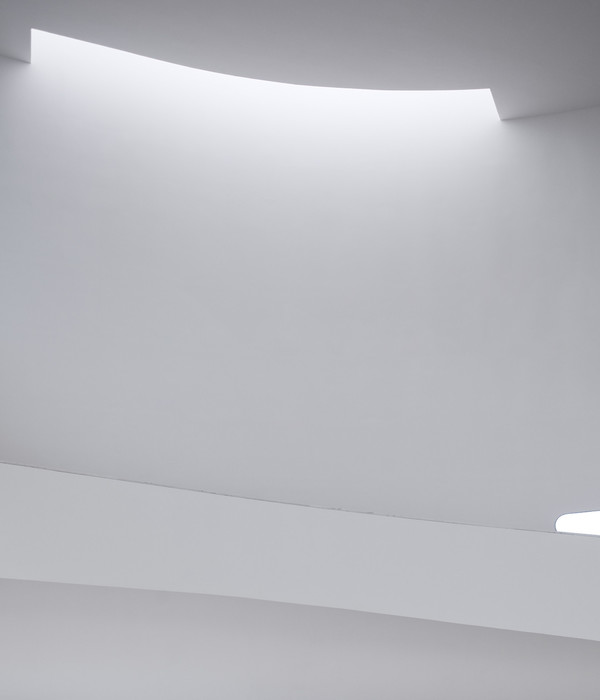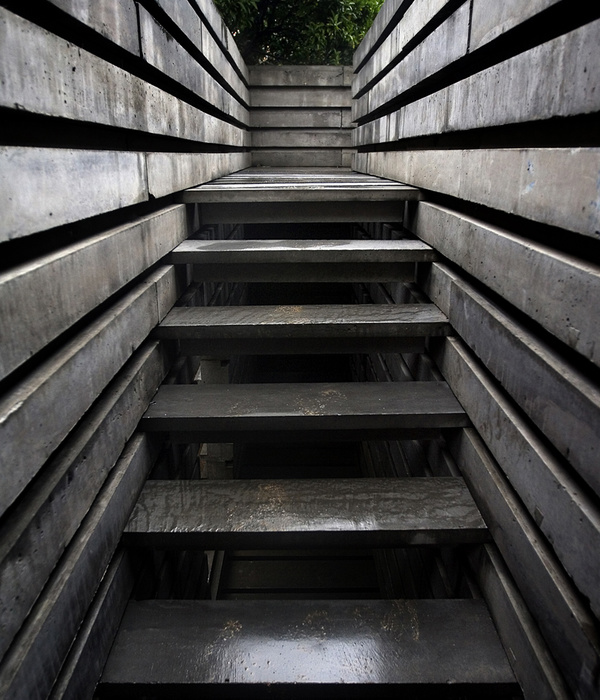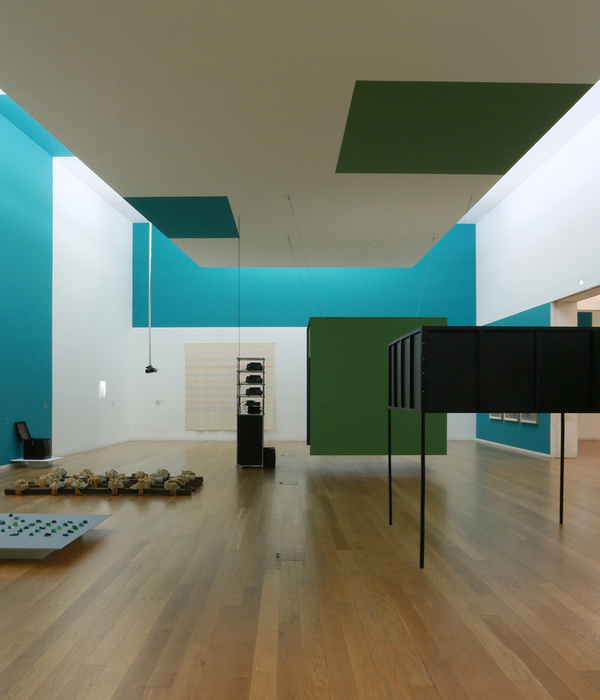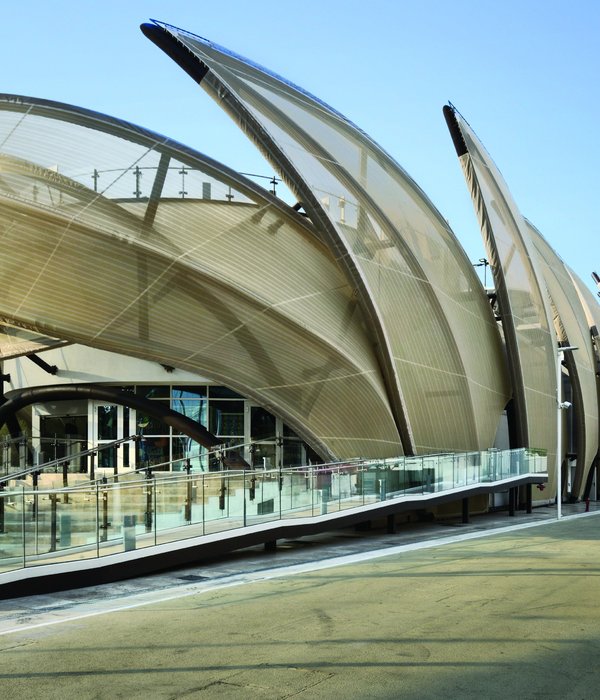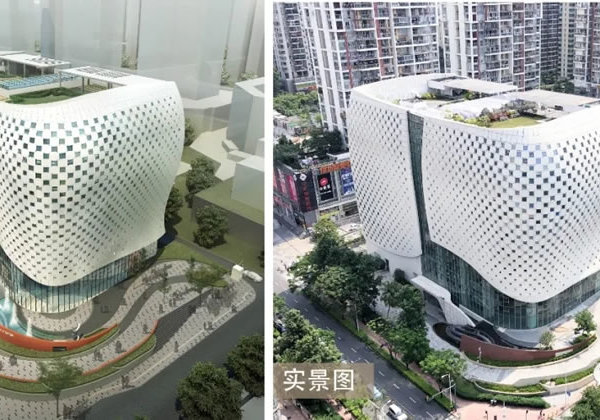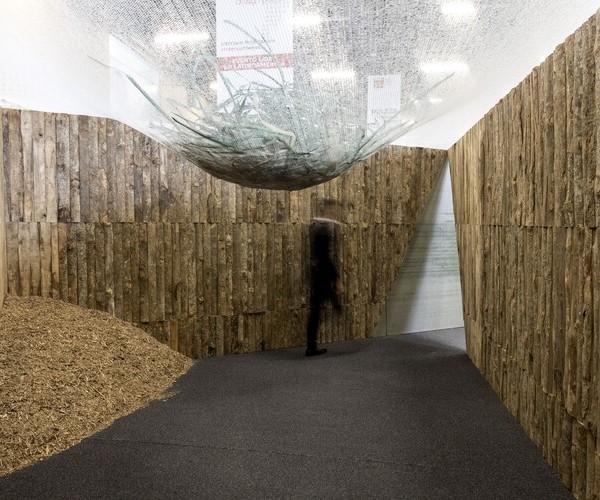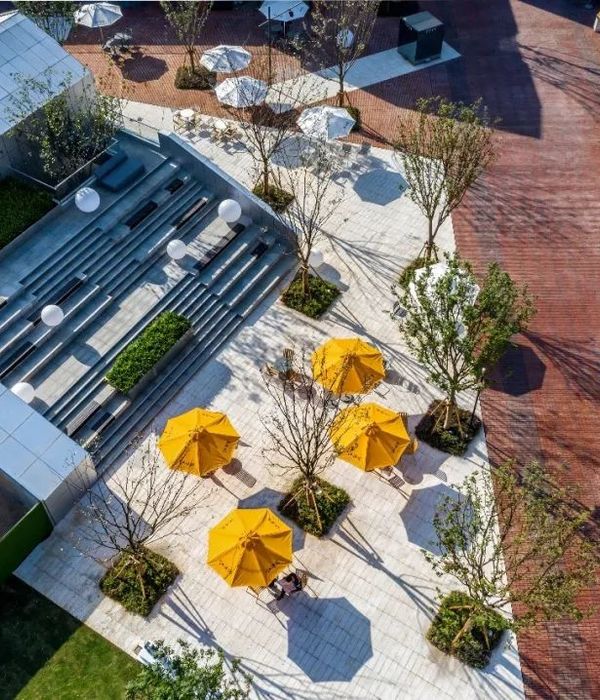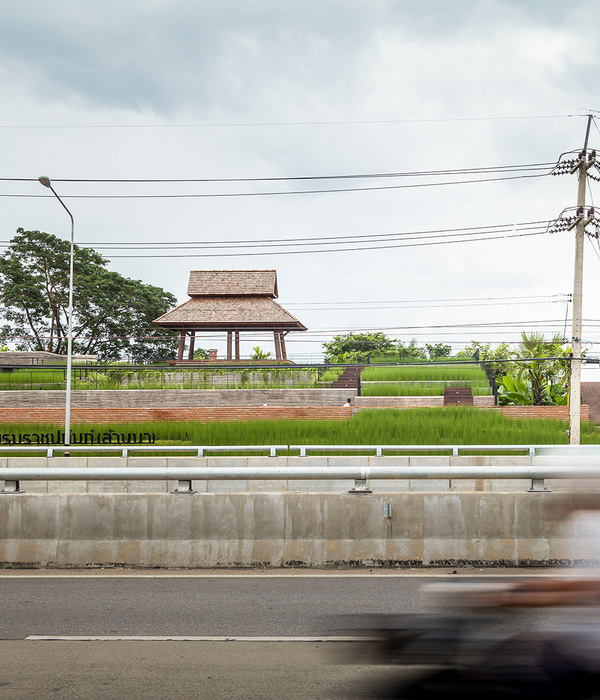Architects:officePROJECT
Area :967 m²
Year :2019
Photographs :Haiting Sun, Ke Chang
Principal Architect : Ke Chang, Wenhan Li, Minjie Liu
Design Team : Jianwei Zhao, Honghui Jiang, Hao Zhang, Panao Feng, Bo Yuan, Jiatong Wang, Xiangdan Wu
City : Beijing
Country : China
From "Renovate the old as new" to "make the new as old"In today's urban renewal, we are confronted with more and more non-new projects. We found that a lot of renovation projects in the city are not buildings of historical value being shown in the media, but more often are abandoned buildings being built during new China decades mass city urban construction. The buildings are abandoned not because they are old, but they are too new. That is to say, they are in lack of consideration about the history of the site in design, but completely went to the imaginary novel. Therefore, they could not adapt to the local development and space aesthetic requirements and eventually became abandoned. To confront with these normal and recent renovation projects, the traditional "renovate the old as new" design method no longer work.
Throughout history, we actually have a lot of evidence for such kind of projects, especially in the long process of architectural renovation in European countries. There were the classic renovation cases in the hand of Carlo Scarpa, as well as the new work of cutting-edge firms like TEd 'A in Spain. Their inspiration is that, no matter the project is to be transformed into new or old, the principle is to meet today's functional requirements. It means that we should take the initiative to implant the old part when addressing the kind of projects with rough constructions. Through this interaction between the old and the new, the transformed building is much less obtrusive, allowing it to blend in with its surroundings as if it were already here, only to be reactivated. To sum up, it's to “make the new as old”. And our Wu Yueshi art museum is an attempt to try this concept.
The "origin" of the Intimate GardenIn 2016, we reconstructed a metal plant into a studio and gallery-- Hall within Cloud for artist Xu Hongquan. As the factory was the first artist studio reconstructed from the plant, it seems to have a sensational effect that helped promoted the pace of renovation through the entire factory park, which gradually became the Jiao Village Art District. We’ve revisited it this year; in the meantime, rose to meet our new challenge --Wu Yueshi Art Gallery. Wu Yueshi, a leading figure in the Chinese painting area, a famous artist of Chinese painting, has been studied Chinese traditional painting since his childhood. He has been taught in person by several great Masters in Chinese painting such as Wang Zhujiu, Dong Shouping. We expect the gallery for him to be an artwork and an art base of Chinese painting. However, in what way can we implant an art gallery into the plant compound filled with existing rural factory looks vapid and stiff became the strongest theme we’ve confronted. In the consequence, based on the premise of using existed structure of the plant to the greatest extent, we strive to create a space of poetry match the space of Chinese painting by the theme of our concept “make the new as old”.
Multiple screens to triple garden--a space prototype of Contemporary artistsA mentalretrospect of “multiple screens” conceptIn the design of Hall within Cloud, we’ve investigated to reproduce “multiple screens” in Chinese traditional painting through analyzing artists’ mental structure, through creating a space structure of modern art based on Chinese painting’s concept “paint in paint”; meanwhile, implanting a visually functional system to apply to artist’s daily life. In this design, we’ve explored to form a room cluster by digging into a layer of space and canceling the corridor. Through layers of frames, we express the space concept “depth” and achieve uninterruptedly connecting line of sight. Still, the design remains unsatisfactory, since we merely discussed nesting the space on a two-dimensional plan without considering three-dimensional space which extends from interior to exterior. It is hoped that in the design of Wu Yueshi Art Gallery,the concept of “multiple screens” could go further.
From the mental imagine “multiple screens” to further ideal model “triple garden”Wu Yueshi Art Gallery was located at the rear side of Hall within Cloud and was next to the whole factory compound’s central yard. There is a spacious rectangular courtyard northwards. Originally it was a neat building unfurnished consists of a basement and two above-ground levels.Wu wishes that the basement to be the gallery. Ground floor to be the personal studio and the second floor to be the room pertain to them for read,rest and accommodation. Although such division is built on simple function,it corresponds to a diagram in the level of mentality. Three levels of space separately represent three phases appear during the process of creation: think,express and exhibit. Therefor we’ve named the basement ‘sinking garden’ implying for quiet exhibition sinking into the ground. The ground floor, ‘wandering garden’,is the space for creation,visit and communication between host and guests. The second floor implies for a tranquil place floating above our mortal life,named “floating garden”. In the consequence,a vertical space of triple garden initially been constructed.
It’s still inadequate so far apparently. For art isn’t a simple system divided into levels. The three phases are supposed to be cause and result of each other and meanwhile simultaneously happen. Just as the painting of Mr. Wu. It can suddenly appear or be seized by accident after lots of precipitation. As an ideal space prototype,it is supposed to break the division between vertical or horizontal layers. We create a double-height space of one unit linked the basement and the ground floor to be a lecture hall. Then create a double-height space breakthrough the first and the second floor to be a courtyard which is half outside and half inside,named ‘wind yard’.
In terms of horizontal and vertical aspects,the lecture room and the wind yard penetrate and connect with each other then formed a building of three layers of visual and space that cut through also overlap each other. Triple garden developed into triple courtyard. It constructed a complex but clear relationship of space and communication as an ideal space prototype. The relationship connects artist Wu,his friends and students,furthermore visitors attracted to the gallery. During the course entering the gallery,Therelationship and role of three were transformed continually thus formed different kinds of space experience. As visitors walk down to the exhibition then becomes the invested guest,then they gradually become the friends of the owner. Triple garden as a space system could play the role of leading the upcoming stories. Hence,an ideal form of art space begins to work effectively.
The "triple courtyard" leading to the "deepness"At the very beginning of the project we were asking ourselves: What is an ideal art space prototype of the contemporary literary men? In the retrospect of history of architecture,Geoffrey Bawa’s private resident seems rather normal from outside,however,inside hidden is quite different. When we come up with another resident of Luis Barragan,during the relocation and changes of it over and over,it became smaller and finally pointed to the sky. Through those two architects’ residents,we can see how to build an interlocutory relationship between their inward world and the whole civilization through the construction of a small world. Therefore,by Wu Art Gallery,we are expected to explore an expression of our indigenous architects’ mental image.
Thus,outside of the main part of ‘triple garden’,we also create a ‘triple courtyard’. Through ‘floating bridge’ and ’connecting bridge’ as dramatic devices in the front yard, we try to lead people from the gate into the inside of the building,and the stream of people continues to be stretched and folded. In a series of changing spatial experience, our awareness of the outer world begins to fade and we are guided by our body into a palace of art.
Initial yardis the beginning of the triple courtyard. Water Platform and brick yard could apply to the function of outdoor exhibition and gathering. Through the guidance of water platform,between brick yard and building,there is a sinking fissure where visitors can walk down to the exhibition room underground right through it,therefor reduce the interferenceofstudio on the first floor. Another path is led by the floating bridge. The path across the fissure and gate,entering into the ‘wind yard’ in the ground floor. wind yard is at the heart space of the gallery. As a device function as changing people’s role and leading them, it’s a semi-outdoor space which makes a close connection of the entering bridge and every floor. Looking outside through separate windows there are different scenes:towards a staircase,a well and a courtyard. A prominent experienceof naturalthat space penetrating layer upon layer thus the traditional garden was translated by a modern style.
The ground floor ‘wandering garden’ consists of a tea room,a studio and a dinning room. As the core zone for creative work and reception of Wu, wandering garden owns a large area of glass window southwards therefor has adequate sunlight. Except from the closed studio,the tea room is approachable for exhibition room underground forming a flowing zone connects with other space. Along a wandering bridge build by steel frame, we can enter the studio from the tea room,or hear the lecture on it,or enter the exhibition through the staircase. wandering garden became an exclusive room for Wu to create and wander freely.
Environment - physical thinking of light, materials and constructionThe foundation of the whole material atmosphere of the house is actually the moment when you first see the warm light and shadow of the raw fair-faced concrete in the basement. In a rough unfinished state, the tactile and perceptual delicacy of plain concrete has completed the construction of the "sinking" atmosphere. This inspired us that, with the four season daylight, the environment built by the light and materials is constantly changing. It makes the "light" and the body the protagonist from the old material. To reflect the "old", we chose, concrete, black brick, diatom mud artificial hair, steel, anticorrosive wood.
We kept these original construction walls intact in the underground "sinking garden" without any unnecessary treatment. Only in the required part of the necessary channel, so that the original edge of the concrete wall was smashed out of a gap of different forces, this gap was also preserved by us, become a decoration, not deliberately retained but also a choice of architectural imprint.
In the "wandering garden" we knocked down most of the solid walls and replaced most of the removed walls with glass curtain wall. The first floor is turned into a spatial layer that maximizes the infiltration of the surrounding space, which is closely connected to the natural space of the front yard and backyard. The light of the four seasons is captured and tracked by the boxes of the space, and then developed, flowing between the glass boxes, showing multiple changes at every moment. In the the new wall, we finally chose black bricks as the main material and adopted different masonry methods. On the one hand, the "newly added" wall element is recorded in this way. On the other hand, variable style of the black brick "plum blossom" masonry method can also show the "wandering garden" spiritual level of flexibility - and the structure of the layer of the wall of non-bearing and freedom. The "hard connection" between the black brick wall and the underground concrete wall also reflects our values towards history and today. Black brick is more used as a kind of flexible modern unit material. The "cultural symbol" on the black brick is not overemphasized, but more concerned with the body feeling brought by the material itself. In the "wind court", the black bricks spread from the wall to the ground, and then to the semi-outdoor platform on the second floor, conducting a series of "triple garden" the guiding role of this space device.
On the outside of the "triple garden", in response to the newly implanted layers of materials, we chose an almost original hand-drawn brushed outer wall. The texture faithfully records the movement track of the workers’ hands and fingers, so that the memory of the body's work can be preserved. At the same time, in order to improve the construction of the brushed wall, we further subdivide the outer wall, which further highlights the module of the whole building in the outside, so that people can continuously experience the "make the new as old" on the way of walking close to the wall.
Architecture and “old friends”What kind of emotion should be stimulated in an ideal space? Throughout the design process, this question has been on our minds. In Ms. Wu's house, we felt that perhaps the ideal space should have a variety of emotions. Sometimes it may be in a deep whisper, and sometimes it may be exciting and bursting. The ideal may not be pure, but more ordinary. Perhaps this is the real art, with the daylight flowing with expectation, hope, stand-by, anger, joy, and peace. It is both the model of the ideal and ordinary man. The "old" is not just an "old", but a feeling of "old friends" . For Mr. Wu, the art museum is a place to meet new and old friends. New friends would become old eventually, and the new space place would also become old. The whole process is like going from " old garden" to "old friend", which is " Garden as before".
▼项目更多图片
{{item.text_origin}}

